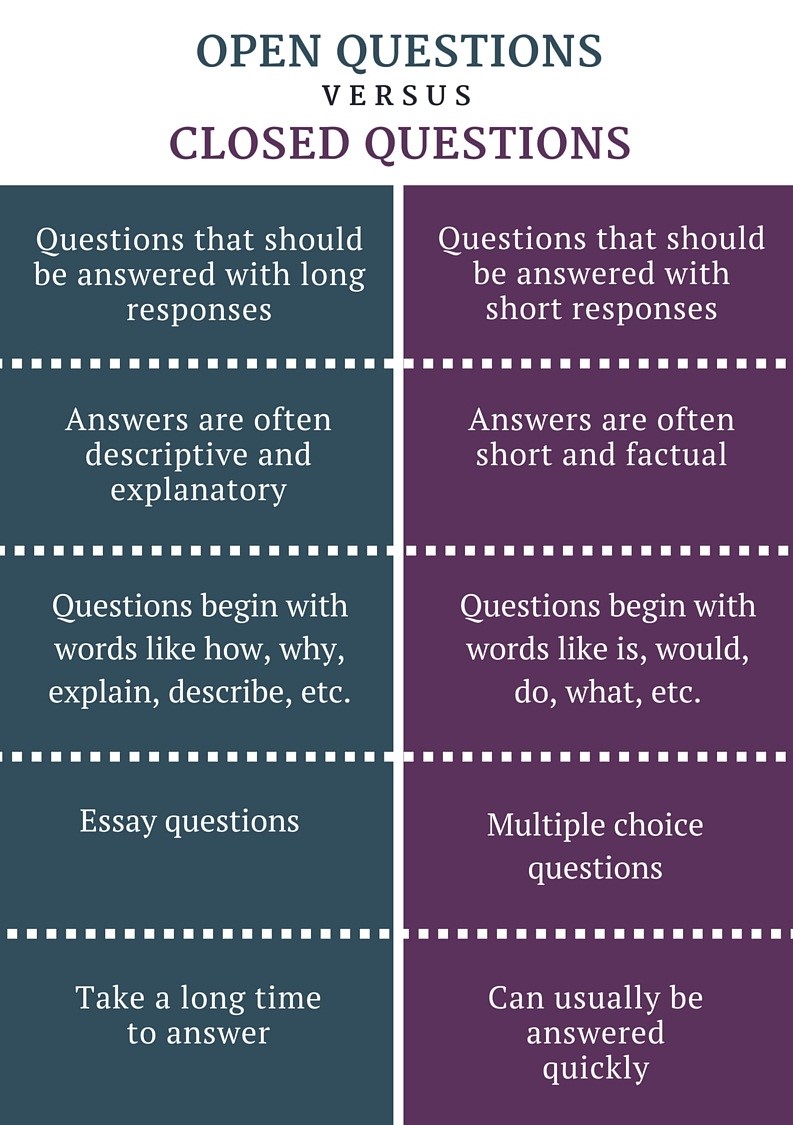Did you know there's a right way and wrong way to ask a question? Think about this scenario: You know that one of your kids tracked dirt all over your white carpet. Which question is likely to get you the answer you're after:
- "Did one of you track in this dirt from outside?" (Of course, they did. You already know that.)
- "Which one of you tracked in this dirt from outside?" (This question will identify the culprit.)
See the difference in these questions? One is closed-ended (essentially a dead-end) and one is open-ended (to get you results). We'll get into these types of questions later. Right now we need to talk more about how to develop the art of asking the right question at the right time.
It's true. It's not enough to know the types of questions to ask, but how to go about it. Asking the right question at the right time for the customer can be the difference between solving a problem, making a sale, or satisfying a request. Asking the right question at the right time for the customer means that you're attuned to what the caller is trying to accomplish by calling you. Quite simply, it doesn't start with questioning at all, but rather another important skill: listening.
Active listening, in fact, the type of listening that is focused, attentive, and undistracted, is the best base from which to start a questioning journey. By listening to your customer's initial question and listening to their follow-up answers, you can not only figure out the best questions you need to ask but solve a problem along the way.
Formulating Questions Effectively
One of the easiest tools for the effective formation of questions in call centres is to think of them in a sort of funnel. This method allows you to ask questions in a logical sequence. The widest part of the funnel (at the top) is where you'd use open-ended questions. As the neck of the funnel narrows, so too should the questions, which should become more focused (such as probing questions) to get to the heart of the issue.
Click here to see a video that explains the power of effective questioning.
With a plan for asking questions based on the funnel, the next steps are easy:
- Use verbal cues, such as ''I see,'' ''I understand,'' and ''continue'', to show customers you're listening.
- Demonstrate that you understand the customers' answers by repeating some of their wording back to them, such as ''So, what you're saying is that your television is making a whirring sound?''
- Continue asking questions as appropriate: ''What is on the picture of your television when it makes this noise?''
- Summarize the phone call before providing a solution. This gives the caller the confidence that you've heard everything while offering an opportunity to contribute anything they might've left out.
So, now that you know how to ask a question, what types of questions will get you the answers you need? Let's look at a few.
Closed Questions
Closed questions invite a short-focused answer. Answers to closed questions can often (but not always) be either right or wrong. Closed questions are usually easy to answer. As the choice of answers are limited, they can be used effectively early in conversations to encourage participation and can be very useful in fact-finding scenarios such as research.
Closed-end questions can also confirm information with a simple yes/no answer.
Closed questions are good for:
- Testing your understanding, or that of the other persons: "So, if I get this qualification, I will get a raise?"
- Concluding a discussion or making a decision: "Now we know the facts, are we all agreed this is the right course of action?"
- Frame setting: "Are you happy with the service from your bank?"
A misplaced closed question, on the other hand, can kill the conversation and lead to awkward silences, so are best avoided when a conversation is in full flow.
Open Questions
By contrast to closed questions, open questions allow for much longer responses and therefore potentially more creativity and information.
They usually begin with what, why, how. An open question asks the respondent for his or her knowledge, opinion or feelings. "Tell me" and "describe" can also be used in the same way as open questions. Here are some examples:
- What happened at the meeting?
- Why did he react that way?
- How was the party?
- Tell me what happened next.
- Describe the circumstances in more detail.
Open questions are good for:
- Developing an open conversation: "What did you get up to on vacation?"
- Finding out more detail: "What else do we need to do to make this a success?"
- Finding out the other person's opinion or issues: "What do you think about those changes?"
